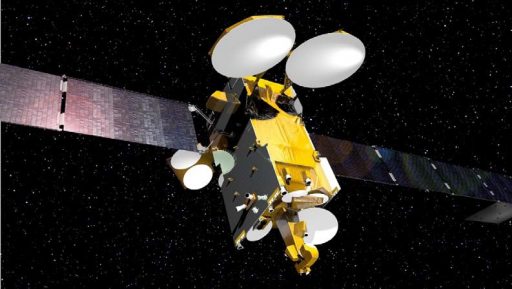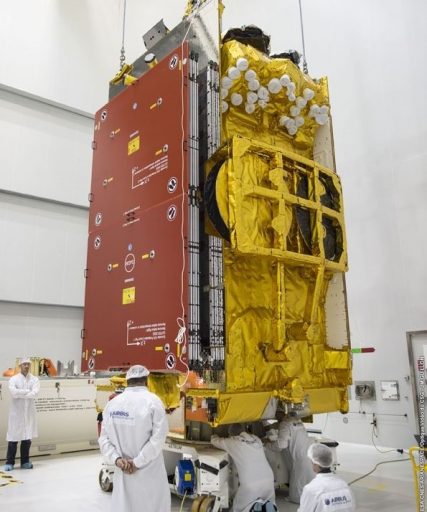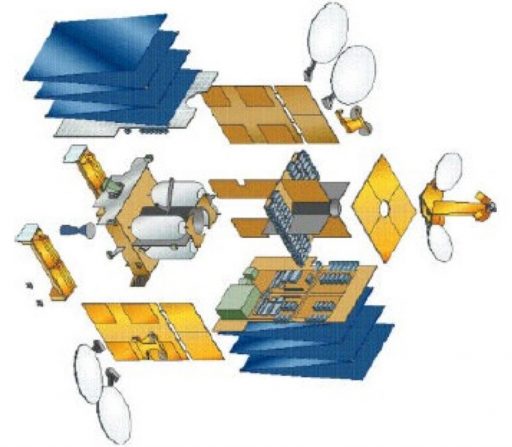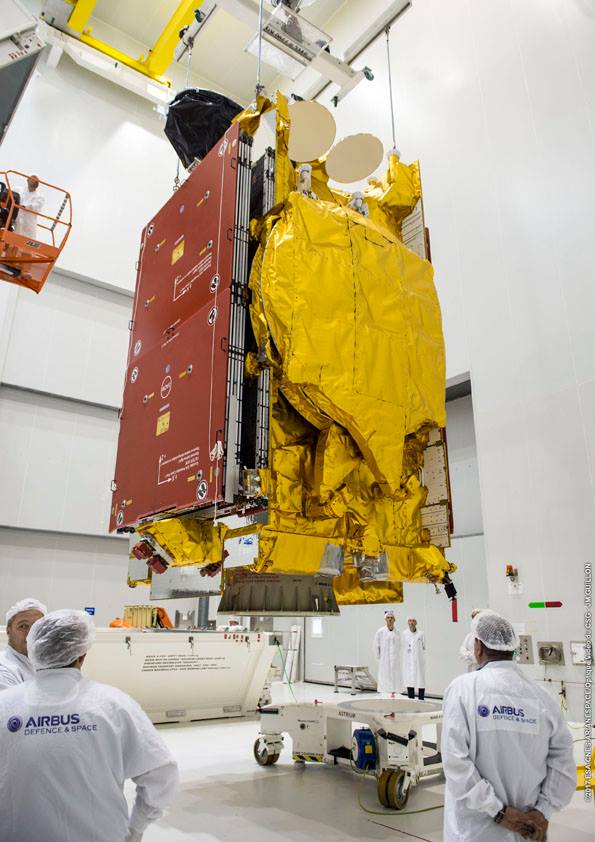SKY Brasil-1 Satellite

Intelsat 32e with the SKY Brasil 1 payload is a commercial communications satellite build by Airbus Defence and Space for operation by Intelsat on behalf of AT&T / DirecTV Latin America. Outfitted with a Ku/Ka-Band payload, the high-power satellite will deliver high-definition, 3D and cinema programming to Brazil.
It is the tenth AT&T / DirecTV satellite lifted by Arianespace, set to join a fleet of satellites serving over 12.5 million customers in Latin America with special focus on markets in Venezuela, Argentina, Chile, Colombia and Brazil. The satellite was ordered from Astrium (now Airbus Defence & Space) in October 2013 based on the flight-proven Eurostar 3000X platform.

SKYB-1 hosts a total of 81 transponders – 60 Ku-Band transponders and 21 high-power Ka-Band transponders. The Ku-Band payload delivers countrywide coverage over Brazil to ensure a continuation of legacy digital television services while also enabling expansion of new services such as HDTV and 3D broadcasting. Additionally, the satellite will deliver 20 spot beams catered to the distribution of regional television channels.
The Ka-Band payload on the SKYB-1 satellite is operated by YahSat, headquartered in the United Arab Emirates. YahSat operates a pair of satellites delivering coverage to Africa, the Arabian Peninsula and the Middle East but said the company was interested in expanding their reach through agreements with other leading satellite operators. The existence of the Ka-Band payload on SKYB-1 had been unknown until an August 2015 FCC filing.
SKY Brasil-1 has a launch mass of 6,000 Kilograms and measures 7.5 by 2.9 by 2.3 meters in size when in its stowed launch configuration under Ariane 5’s payload fairing. The satellite has been built for a 19-year service life and will operate from 43.1 degrees West in Geostationary Orbit.
The Eurostar E3000 satellite platform is capable of hosting communications payloads with a total power exceeding 16,000 Watts. The spacecraft platform can support a high degree of customization to be able to support a variety of payloads including commercial communications and military payload packages. Eurostar-3000 made its first launch in 2004 and is available in different versions to cater to the specific needs for various communication payloads.


The satellite platform consists of a central cylinder which facilitates the propellant tanks for the bi-propellant propulsion system. The cylinder consists of several segments connected via ring-joints. Internal composite panels are mounted to the cylinder to facilitate the external panels and provide mounting platforms for the various satellite components.
Two deployable solar arrays are used for power generation featuring triple-junction Gallium-Arsenide solar cells. Power is stored in onboard batteries while a Power Conditioning and Distribution Unit regulates the satellite’s power bus and controls the state of charge of the batteries. SKYB-1 will generate a total power of 16 Kilowatts at the end of its mission.
A dedicated bi-propellant propulsion system will be used for apogee maneuvers and orbital fine-tuning, comprising a liquid-fueled main engine for apogee maneuvers and fouteen 10-Newton S10-21 thrusters. To enable a 19-year service life, SKYB-1 is equipped with an electric propulsion system that will be used for stationkeeping maneuvers in Geostationary Orbit, primarily for North-South Stationkeeping that requires around 45m/s of delta-v per year. To that end, the satellite is outfitted with four SPT-100 Stationary Plasma Thrusters, each weighing 3.5 Kilograms and generating 83 millinewtons of thrust by accelerating a stream of Xenon ions in an electric field, achieving an exceptional specific impulse of 1,600 seconds.
Eurostar-3000 is three-axis stabilized featuring a state of the art navigation system. The satellite provides precise Earth-pointing capabilities and stationkeeping accuracy is +/-0.05 degrees.
